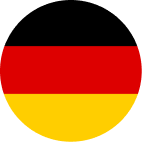EPS is a very environmentally friendly and economical coating process. Different types of powder coatings can be used to coat different substrate materials and meet different requirements.
The powder coating particles can be charged in two ways:
- Corona charging
- Tribocharging
In the corona spray system, the powder particles are charged negatively - either inside a spray gun or in an applied high-voltage field when the powder emerges. The ionised powder particles then travel along the field lines to the positively charged, grounded work-piece. If a high working speed and the coating of large surfaces are required, this process is the obvious choice. During tribo-charging (friction charging), the powder coating passes through a PTFE tube at high speed. Under air turbulence, all particles rub against the surface of the tube, give off electrons and are positively charged. Work-pieces with recesses and cavities in particular benefit from this process.
An essential component of the electrostatic powder spraying system technology is the powder coating booth. In addition to defined air guidance and extraction, it also contains control and safety systems as well as a powder recovery system.
Thermoset powder coatings are used, which melt and cross-link on the hot component surface.
 Belgium nederlands
Belgium nederlands Belgium français
Belgium français Canada english
Canada english Canada français
Canada français China chinese
China chinese Czech Republic čeština
Czech Republic čeština Deutschland deutsch
Deutschland deutsch France français
France français Hungary magyar
Hungary magyar International english
International english Italy italiano
Italy italiano Netherlands nederlands
Netherlands nederlands Poland polski
Poland polski Russia русский
Russia русский Slovakia slovenčina
Slovakia slovenčina Switzerland français
Switzerland français Switzerland deutsch
Switzerland deutsch Turkey Türkçe
Turkey Türkçe USA english
USA english